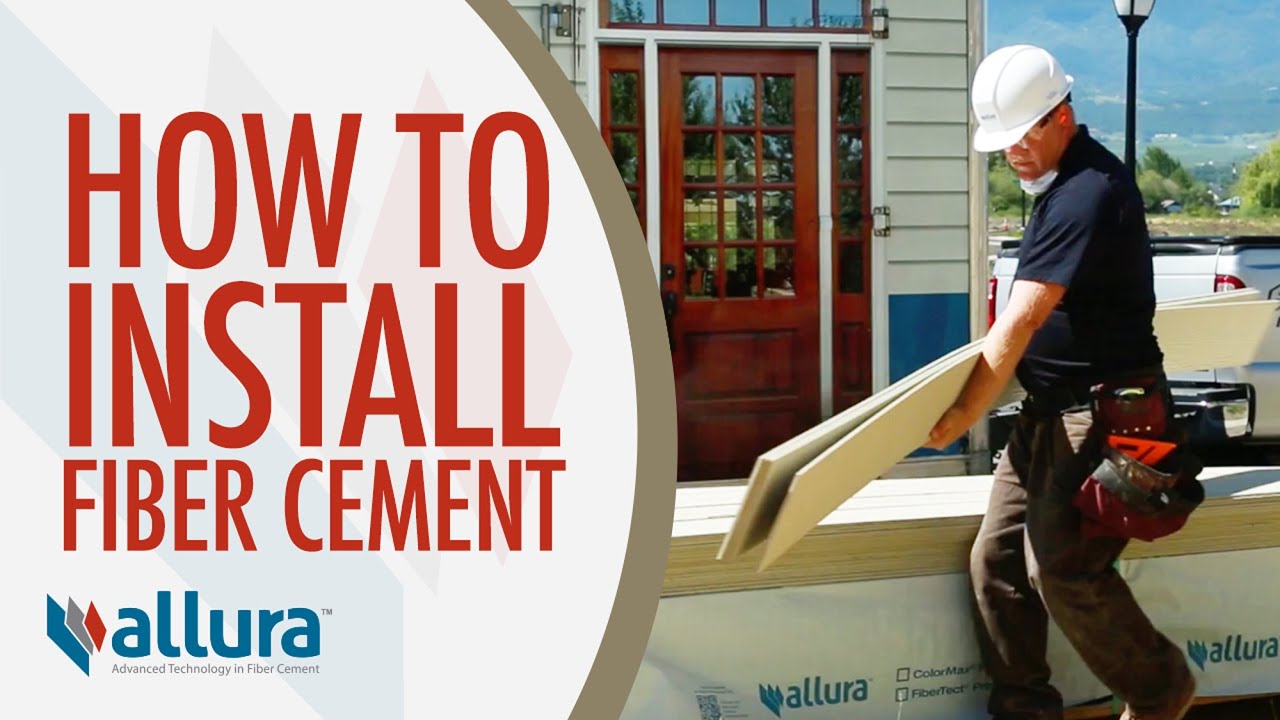Embark on a journey through the world of fiber cement siding installation, where precision meets durability. This guide offers insights, tips, and techniques to ensure a seamless installation process for your next project.
From understanding the basics to mastering the finishing touches, this guide covers everything you need to know about fiber cement siding installation.
Introduction to Fiber Cement Siding Installation
Fiber cement siding is a durable and low-maintenance building material made from a mixture of cement, sand, and cellulose fibers. It is known for its resistance to fire, insects, rot, and harsh weather conditions, making it a popular choice for homeowners looking for long-lasting siding options.
Benefits of Fiber Cement Siding
- Excellent durability and longevity
- Low maintenance requirements
- Resistant to fire, insects, and rot
- Weather-resistant, suitable for various climates
Applications of Fiber Cement Siding
- Residential homes
- Commercial buildings
- Multi-family housing units
- Industrial structures
Importance of Proper Installation Techniques
Proper installation techniques are crucial to ensure the longevity and performance of fiber cement siding. It is essential to follow manufacturer guidelines and best practices to prevent issues such as water infiltration, cracking, and improper alignment. Hiring experienced professionals or following detailed installation instructions can help avoid costly repairs and ensure the siding's durability over time.
Pre-Installation Preparation
Before starting the installation of fiber cement siding, it is crucial to make sure you have all the necessary tools and materials at hand. Additionally, measuring and cutting the siding accurately, as well as preparing the wall surface properly, are essential steps for a successful installation.
Identify the tools and materials needed for the installation
- Fiber cement siding panels
- Tape measure
- Pencil
- Straight edge
- Circular saw or special fiber cement cutting tool
- Nails or screws
- Hammer or screwdriver
- Level
- Protective gear (gloves, goggles, mask)
Discuss the significance of measuring and cutting fiber cement siding accurately
Measuring and cutting the fiber cement siding accurately is crucial to ensure a proper fit and finish. Any inaccuracies in measurements or cuts can lead to gaps, improper alignment, and overall aesthetic issues. It is essential to take your time and double-check measurements before making any cuts to avoid costly mistakes.
Elaborate on the importance of preparing the wall surface before installation
Preparing the wall surface before installing fiber cement siding is essential for the longevity and durability of the installation. Proper preparation, including cleaning, repairing any damage, and ensuring a smooth and flat surface, will help the siding adhere properly and prevent issues such as moisture infiltration or warping over time.
Taking the time to prepare the wall surface adequately will ensure a professional-looking finish and prolong the lifespan of your siding.
Installation Process

Installing fiber cement siding involves a step-by-step process to ensure a secure and weatherproof finish on the exterior of a building. Here are the key steps to follow:
Securing the Siding to the Wall
- Start by measuring and cutting the siding panels to fit the dimensions of the wall, leaving a small gap for expansion.
- Use corrosion-resistant nails or screws to attach the siding to the wall studs, ensuring they are driven in straight and not over-tightened.
- Secure the siding at the top of the panel first, then work your way down, overlapping each subsequent piece to create a tight seal.
- Check the level and alignment of each panel as you go to ensure a uniform and professional-looking installation.
Properly Overlapping Siding for Weatherproofing
- Overlap each siding panel by at least 1 inch to prevent water infiltration and create a seamless appearance.
- Apply a weather-resistant barrier, such as house wrap, behind the siding to further protect against moisture penetration.
- When overlapping siding pieces, be sure to follow the manufacturer's guidelines for the specific product you are using to ensure proper installation.
- Use flashing and caulking around windows, doors, and corners to create a watertight seal and prevent water damage.
Finishing and Sealing

When it comes to fiber cement siding, the finishing and sealing play a crucial role in ensuring the longevity and appearance of the installation. Proper finishing not only enhances the aesthetic appeal but also protects the siding from external elements.
Sealing, on the other hand, helps in preventing moisture infiltration and ensures durability.
Finishing Options
- Paint: Fiber cement siding can be painted in a wide range of colors to suit your preferences. Make sure to use high-quality exterior paint for a lasting finish.
- Stain: Staining the siding can give it a natural wood-like appearance while still providing protection. It is essential to choose a stain that is compatible with fiber cement.
- Pre-Finished: Opting for pre-finished fiber cement siding can save time and ensure a factory-applied finish that is durable and long-lasting.
Importance of Sealing
- Prevents Water Damage: Sealing helps in keeping moisture out, which is crucial for preventing rot, mold, and other water-related damage to the siding.
- Enhances Durability: A proper sealant can increase the lifespan of fiber cement siding by protecting it from harsh weather conditions and UV radiation.
- Maintains Appearance: Sealing helps in maintaining the color and finish of the siding, keeping it looking fresh and vibrant for years to come.
Maintenance Tips
- Regular Cleaning: Periodically clean the siding to remove dirt, dust, and debris that can accumulate and affect the appearance.
- Inspection: Check for any signs of damage or wear, such as cracks or peeling paint, and address them promptly to prevent further issues.
- Re-Sealing: Reapply sealant as needed to ensure continued protection against moisture and other environmental factors.
Final Review

In conclusion, fiber cement siding installation is a meticulous yet rewarding process that elevates the aesthetics and functionality of any structure. With the right knowledge and techniques, you can achieve a seamless and long-lasting siding installation that enhances the beauty and value of your property.














